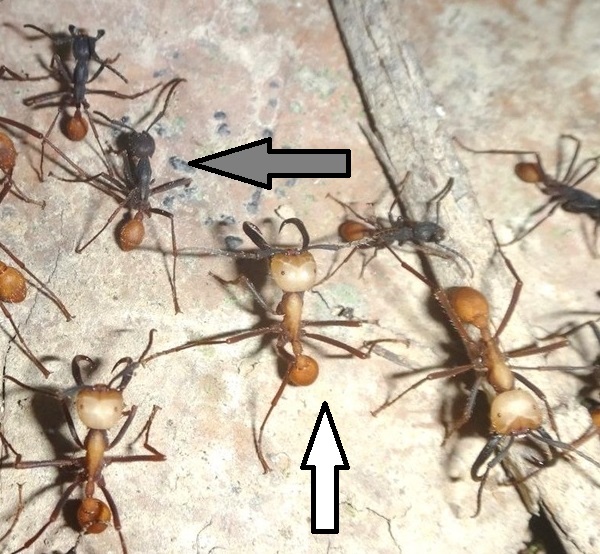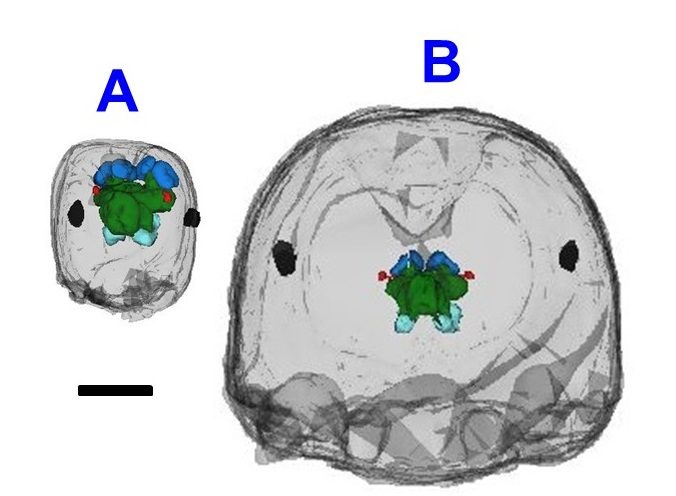
Scientists interested in the evolution of brains often use comparisons among species to explore how the nervous system is shaped by, and adapts to, its environment. Brain tissue is very expensive, and so investment in brains (or in particular brain regions) is expected to closely match the mental or psychological challenges a species confronts: there should be just enough brain power and brain tissue to get by, and no more.
We sought to extend this approach to ask whether members of the same species might differ predictably in brain structure and brain investment, in association with differences in behavioral demands.
Super-organisms
Animal societies, including human societies, can be complex to navigate. When interacting with an array of social partners and enemies, social smarts can be of great value.
But some animal societies have been shaped by evolution such that internal conflict is minimized; this often happens when the group members are closely related, and when strong competition among groups favors group coordination and performance. Some features of these societies can then evolve in response to natural selection at the level of the group, rather than the individual.
When individual interests align with the group as a whole, we can think of the society as a super-organism. We can then explore how natural selection on groups might drive the evolution of specializations among group members. We expect these specializations to enhance group performance or efficiency. Could group selection actually favor a reduction of brain investment in some group members?
Comparing castes
We used the superorganism framework to study patterns of brain investment among the members of insect societies, particularly, of army ants. Social insect colonies are famously divided into castes: classes of individuals that play distinct roles in the social group (for example, think of the reproductive queens versus the sterile, helping workers in a honey bee colony).
Army ants have some of the most dramatic, complex caste systems known: not only are their queens distinctly different, the worker force is divided into three or even four distinct body types, each of which performs different jobs for the colony.

Among army ant castes, the soldiers in the genus Eciton stand out as being rather behaviorally limited. Soldiers are specialized defenders. They have large, muscle-filled heads that drive long, powerful mouthparts shaped like ice tongs.
They are effective at tracking down, biting, and stinging enemies – mostly birds and mammals, including field biologists. But they do little else. Soldiers cannot carry the young during colony emigrations, or hunt and kill prey. Soldiers cannot even feed themselves.
Do soldiers have reduced brain investment, as expected based on their simple behavioral repertoire? Our data suggest the answer is yes.

We measured head size and brain region volumes in several species of Eciton army ants, comparing workers of different sizes and soldiers in each species. Even though worker brain volume increased with body size, that increase slowed or stopped in the soldiers; even though soldiers were larger than the workers, their brains were similar in size.
Furthermore, two key brain regions were smaller than expected based on soldiers’ overall brain size: a region that processes chemical information, and another region that is critical for learning and memory.
These findings are exciting because they support the idea that natural selection for colony efficiency can favor the evolution of reduced brain investment in some group members, when a caste has limited behavioral demands. It appears Eciton soldiers give new meaning to the term, “meat head.”
Comments